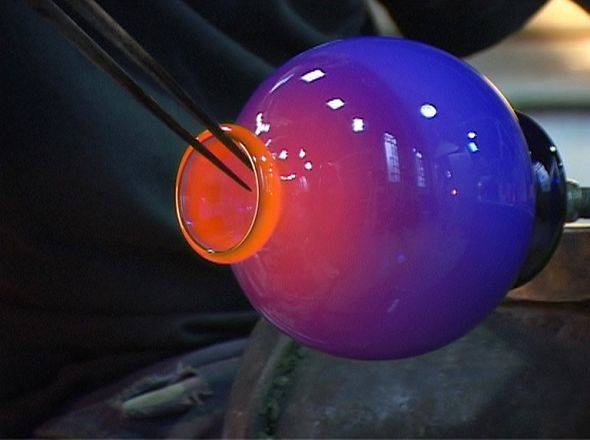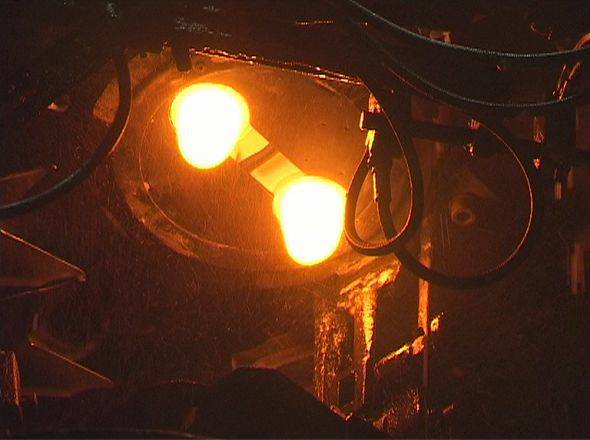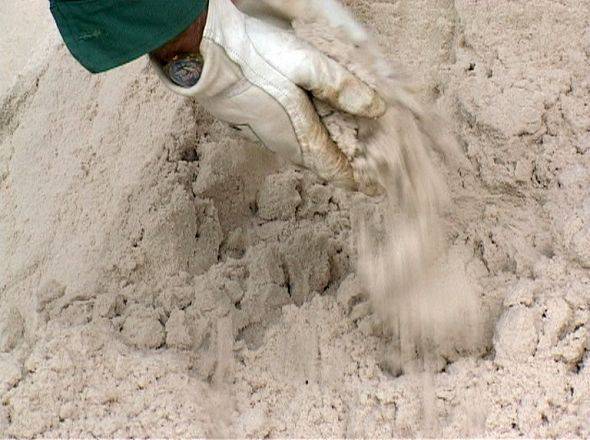Glass

Presentation
Glass is a solid amorphous material formed by the progressive solidification of a viscous liquid, obtained by the fusion of crystal minerals.

The Glass Fusion
Glass is obtained by fusion in a very high temperature furnace of an homogenous mixture of minerals (vitrifiable mixture), called primary materials, which are mixed in appropriate proportions in weight, and glass scraps.

Primary Materials
Silica (SiO2, silicone dioxide) is the most common moulder of the vitreous lattice and is therefore the most important primary material for glass production.
Blast furnaces
We know nothing or very little about blast furnaces before the invention of the blow-rod in the 1st century B.C.
Annealing Furnaces
Shaped glass (blown, moulded etc.) retains high temperature (500-600°C) and do not resist rapid spontaneous cooling.
Types of Glass
Glass also exists in a natural state. The most common one is obsidian, a dark shiny material, which is very hard, formed in volcanic rocks and which man learnt to produce to make objects (blades, arrow-heads, etc.) over one million years ago.
